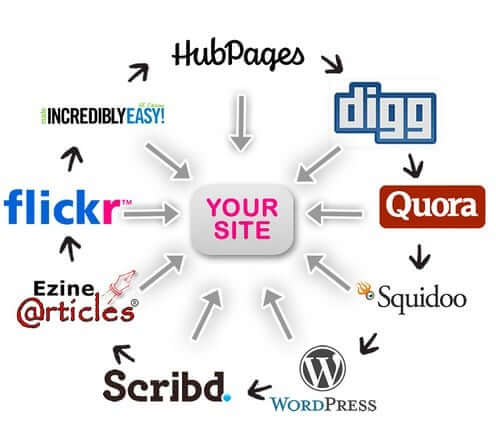How Appropriate Linking Can Maximize Your Content Performance

Maximizing content marketing performance is a function of multiple approaches and strategies. From producing and distributing quality content to drive sales to presenting relevant offers to push leads to convert, there are many different ways to convert leads into actual customers. However, it seems as though this is often easier said than done. With many competing companies expanding their budgets to facilitate content marketing production on a grander scale, it helps to focus on specific strategies that can maximize your content performance consistently. After all, we know that producing quality content must be supplemented by additional aspects that can have a more significant impact on content performance.
The Truth Hurts – Your Content Is Not Enough
Let’s start with the truth, however painful it may be. While as content marketers, we tend to invest heavily in production SEO-friendly posts, they are limited in terms of their scope and word count. But don’t worry, we are all in the same boat. The trick is finding creative ways to get readers to easily read more and share interesting tidbits, thus adding to your lead pool. One of the main ways of expanding this reach rests on the use of appropriate internal and external linking, or in other marketing terms – inbound and outbound links. Let’s take a brief look into these two linking strategies and how they serve to maximize content performance:
Inbound Links – Credibility, SEO, and Power of Numbers
For content marketers, obtaining a high number of inbound links for their specific blog post or article is almost as satisfying as a freshly prepared cheesecake. While this may or not be an exaggeration depending on your level of hunger, the truth is that these inbound links are incredibly powerful for three main reasons:
1. Strengthens Credibility – Get neutral people and companies talking about your great product or service!
We all love to toot our own horn – in fact, this is often part of our daily routine, whether we are client-facing or writing copy to convert leads into customers. Therefore, when someone links to our blog post, this gives an external stamp of approval and improves our industry reputation.
2. Improves SEO Page Ranking –
According to leading SEO consulting company MOZ, “Many top SEOs agree that getting external links is the single most important objective for attaining high rankings. This stems from the idea that external links are one of the hardest metrics to manipulate and thus, one of the best ways for search engines to determine the popularity of a given web page.”
3. Expands Your Potential Pool of Leads – The Power of Relevant ‘Numbers’
This one is just sheer mathematics – the more online users that are exposed to our product or services, the more our product offering is presented to the ‘market’. Thus, by getting external companies to share a specific link connected to our domain, we are directly increasing our lead pool size.

Outbound Links Require Great Content – Become a Source of Knowledge-Sharing
While some companies have their reservations about linking to sites outside of their domain for fear of ‘losing’ site visitors, there are immediate benefits for adding such links that far outweigh those concerns:
1. Establish Relationships With Quality External Sites/Companies
There are many great content-hungry companies eager to get their hands on new and exciting pieces on industry news and/or trends. With an understanding that not all the information can be found in-house, outbound links are a great way to establish meaningful content-related relationship with these external sites. Once fortified, this relationship can result in increased exposure once your blog post appears on their site.
2. Become an Industry Leader/Source of Knowledge
Like we said earlier, your ability to impress leads and improve your conversion rate thru copy is often limited. As such, by encouraging your readers to visit external sites with relevant information, you are directly enriching their capacity and understanding of a specific topic. This can go a long way in establishing a positive relationship with your current and potential clients, especially if we considering the amount of social media sharing taking place, from tweets and shares to customer reviews.
3. Search Engines Will Also Favor These Links
Google and other leading search engines also award visibility rankings based on metrics surrounding outbound links. This is of course dependent on your ability to link to highly relevant, human-written content that adds value to your specific webpage or post. In this way, Google can be rest assured that relevant content is being distributed to relevant users/site visitors.
A few pro tips from your friends at Trendemon:
- As content marketers, you already spend sufficient time surfing the web for relevant industry content as inspiration for your next piece. Take advantage of this time by bookmarking relevant blog posts and articles to be able to come back to at later times. You never know when you will write a specific post or paragraph and that saved link will fit in perfectly as an outbound link.
- Consider writing a curated blog post with links to leading company blogs and sites. This will be highly sharable and further improve your ability to reach hot leads.
- Use SERPBook to identify best performing keywords on search engines. This will give you information regarding specific URLs that you should use when considering inbound and outbound links.
Time to Conclude, But the Links Will Continue
Appropriate inbound and outbound linking will continue to play significant roles in content marketing and in maximizing content performance. The challenge will be how best to leverage these links in order to establish credible and fruitful relationships with external industry leaders. This will go a long way in improving content performance and impressing your readership.